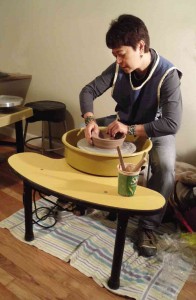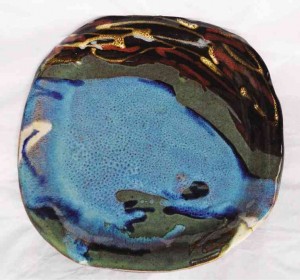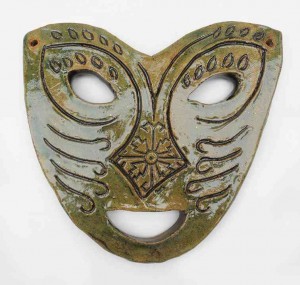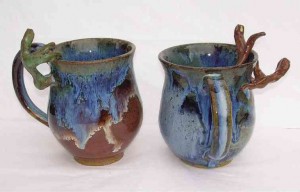
something from those molecules: the artist at work
My basic fascination with pottery is that a piece basically starts with what is considered “dirt” or “earth” in its simplest form.
A painter starts with a blank canvas that is usually gessoed and pristine white, then paints layers on it. A sculptor starts with more varied media—stone, wood, and even clay—then chips away at it to get to the final form.
A potter takes a handful, or more, of grains of earth, binds them together with water, and creates something from those molecules that were once disconnected from each other.
From uniting those separate components, a functional and oftentimes beautiful whole is born.

It feels a bit like a metaphor for why the world and its peoples should come together, but my interest in pottery is simpler. I went to graduate school and got a painting degree, but the three-dimensional nature of pottery, as well as its ability to produce something that is almost always multifunctional, amazes me.
Whimsy
I can say, “I will make a mug.” But besides the size and function of that mug, I can add a little person half in and half out of the mug, seemingly stuck on its walls. Someone can be drinking coffee or tea from the mug, but also enjoying the whimsy of the person who is part of the mug, in between sips.

I sometimes see a form in a piece of clay as I’m throwing it, or even after its main function has been determined. That’s where the fantasy comes in. A fire-pit-inspired candleholder becomes a yawning cowboy, with the opening for the candle as his mouth. I have a piece I call a “mouse Tpot,” which I threw, altered, and then, I realized, looked kind of like a crouching mouse.
A lot of times, what sets potters’ pieces apart is the way they’re glazed.
I make various types of bowls, slab plates, and forms that other potters do, too, but my technique is informed by my study of painting. I’ve always liked the expressionist style, and developed a style in grad school called “surrealist expressionist.”

It was a combination (again) of fantastical or imaginary visions coupled with distortions and free forms. Using those processes in my pottery art, I can splash up to seven or eight colors of glaze on a surface to create abstract landscapes or still-life images on my pieces.
On occasion, I finger-paint touches of glaze in spots where they are “called for.” I see the full picture in my head and try to get as close to it as I can, keeping in mind that all parts of the piece should hold interest.








































